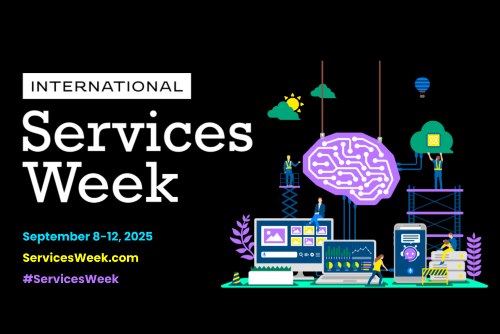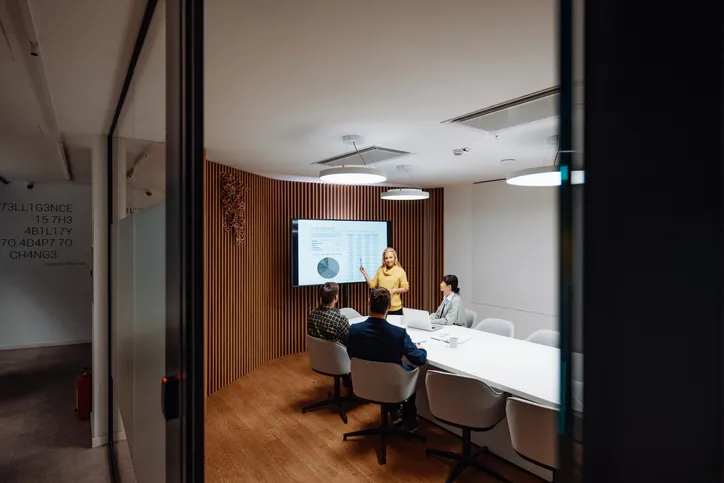Connecting the dots for seamless services delivery

It has been interesting to see how professional services organisations have responded to an increasingly difficult economic environment, with a slight change in emphasis. Instead of the relentless pursuit of growth we are now observing greater focus on profitability, and the importance of optimising utilisation of project delivery resources. This shift is a game-changer for delivering effective, revenue-driving services, but it all depends on one thing —the ability to seamlessly share information.
To make it in today’s agile service delivery environment, you’ve got to connect the dots between sales, support, service, customer success, and finance. It’s all about breaking down barriers between functional silos and creating a seamless, accurate, up-to-date flow of information that everyone can see, use and draw insights from.
But outdated tools such as spreadsheets create obstacles by becoming data graveyards. They’re notoriously error-prone, which often results in revenue leakage and increased business risk. In addition, they are ill-designed to support a flexible services business that delivers a wide range of billable services and delivery models.
This disconnect presents a number of critical problems for services-centric organisations:
Delivering on customer expectations
Sales promises the moon and stars, but services can’t always deliver, the whole “out of sight, out of mind” effect that can occur in the sales-to-service handoff. Sales sells, but then forgets the customer exists once the sale is made, dropping the ball when it comes to delivering an excellent post-sale experience. When teams operate blindly, without clear, shared insight into the business pipeline and available resources, all sorts of problems can occur. Project starts may be delayed due to the lack of available resources and pricing errors may arise resulting in incorrect billing. These kinds of issues hinder the quality of service that customers receive, inevitably leading to invoice disputes, bad debt — and dissatisfied customers.
Achieving financial goals
When sales teams put service estimates together it is critical that they are realistic, accurately reflecting the scope of work, resources, rate cards and timescales for delivery. But it is equally important that they take account of the right resource mix, with available skills and at the appropriate cost. It is easy to promise the world and win business at a very competitive price, but often companies end up selling work that’s both difficult to deliver and unprofitable, undermining financial success. Inaccurate scoping also results in additional, unplanned change requests – a recipe for both margin erosion and customer frustration. The cumulative impact of this is damage to customer and employee satisfaction, customer loyalty and profit.
The good news is that it is possible to do better. When companies bring their CRM (Customer Relationship Management), Professional Services Automation (PSA) and ERP (Enterprise Resource Planning) solutions together, the stars can align, and the benefits are magnified. When you combine the power of Salesforce – the world’s leading CRM – with operational and finance systems that are native to the same platform, the benefits are even more pronounced.
Going this route means:
No more expensive, clunky, home-made integrations
Certinia provides business applications designed specifically for the operations, service delivery and finance functions. They are built directly on the Salesforce platform, which enable these business teams to operate seamlessly with their peers in sales, bringing the traditional ‘front and back offices’ together as one. By having a single, connected, cloud-based foundation, with no integrations, services-based businesses can achieve a smarter, more effective approach to business connectivity, where information can flow seamlessly between departments and functions. From a delivery perspective this offers a unified source of data to promote collaboration and faster, more accurate customer service. From an IT perspective it means that systems can be consolidated, resulting in less complexity and lower total cost of ownership (TCO), combined with an improved experience for users.
Turbocharging innovation
Sales, finance, service, and customer success teams can work together from a single system, sharing the same master customer record, with unified processes and workflows. This provides real insight into both long term revenues and the true cost of service delivery which, over time, enables you to understand the lifetime value of each customer. This opens the door to all sorts of opportunities to improve and personalise the customer experience, and understand the long-term outlook of your business model. Not only that, but employees are empowered to innovate and do their best work, helping to attract and retain valuable talent that drives your business forward.
Staying one step ahead of customer needs
For a growing services business it is vital to have a handle not merely on current business, but also on what is coming in the future. This entails being able to accurately match forecast demand with organisational capacity. It requires the ability to flexibly adapt to changing circumstances with new customer offerings and innovative business models. It demands that organisational growth is not compromised by sclerotic processes and out of date infrastructures. And it means that the opportunities offered by technologies such as AI can be fully embraced.
By taking these steps you don’t merely eliminate disconnects and inefficiencies, you pave the way for a future characterised by efficient, fulfilled project teams, maximised margins, and unwavering customer focus.
Recent Articles
Maximize your Salesforce investment with Certinia






